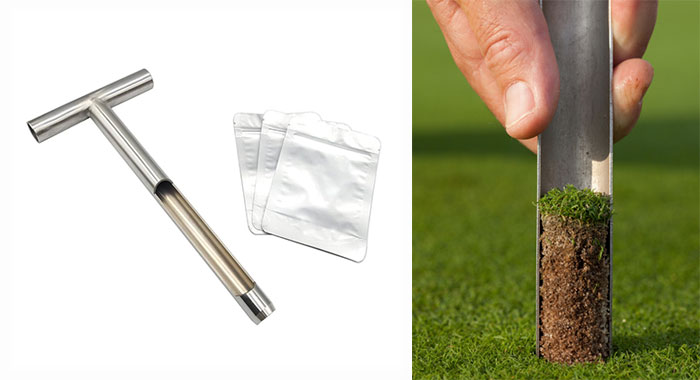As a result of daily maintenance, heavy golfer traffic and other stressors, valuable potassium (K) is lost on intensely managed areas like greens, tees, and fairways. This makes potassium application in the fall an extremely crucial part of turf management, as this element is essential in enhancing the grass’s tolerance to cold, disease, and drought—all common stressors as the seasons change.
Soil Testing
Before applying potassium fertilizer, it’s recommended to conduct a soil test. This will help you determine the existing levels of potassium and other nutrients in the soil, allowing for a more precise application.
By incorporating potassium into your fall turf care routine, you can significantly improve the overall health and performance of your putting greens and other highly managed turf during the winter and into the next growing season. The target for most species of turf is above 2 percent tissue potassium, with 2.5 to 3.5 percent potassium being common for healthy turf.
 Soil samples should be taken from multiple spots twice a year.
Soil samples should be taken from multiple spots twice a year.
Why Potassium Fertilizer in the Fall?
Potassium gives your turf the strength it needs to fight off stress, drought and disease, setting it up to transition to the impending frigid conditions.
- Winter Hardiness: Potassium helps the grass develop a more robust cell structure, improving its resilience against frost and freezing temperatures.
- Disease Resistance: It can enhance the turf’s resistance to diseases, which can be prevalent as temperatures drop and moisture increases.
- Drought Tolerance: Potassium regulates water movement within the plant, helping it maintain hydration during dry conditions.
 Fall potassium applications strengthen roots heading into a dormant or slower-growing season.
Fall potassium applications strengthen roots heading into a dormant or slower-growing season.
Application Tips
The best time for a fall potassium application is while your turf is still active, this allows the turf to absorb nutrients to provide healthy plants and to support strong root development leading into winter.
- Timing: Apply potassium in late summer or early fall, depending on location. Typically late August to early Oct.
- Form of Potassium: Use a potassium sulfate (SOP) fertilizer rather than potassium chloride (MOP), as it is less likely to cause salt build-up, which can damage turf.
- Rate: The application rate typically ranges between 1 to 2 pounds of K₂O per 1,000 square feet, depending on soil test results and specific turf needs.
- Balanced Fertilization: Ensure your application includes a balanced ratio of nitrogen (N), phosphorus (P), and potassium (K). However, nitrogen could also be reduced late in the season to avoid excessive growth that can’t harden off before winter.
 Soil testing is an important first step in identifying nutrient deficiencies in your soil.
Soil testing is an important first step in identifying nutrient deficiencies in your soil.
By incorporating potassium into your fall turf care routine, you can significantly improve the overall health and performance of your putting greens, tees and fairways during the winter and into the next growing season.





